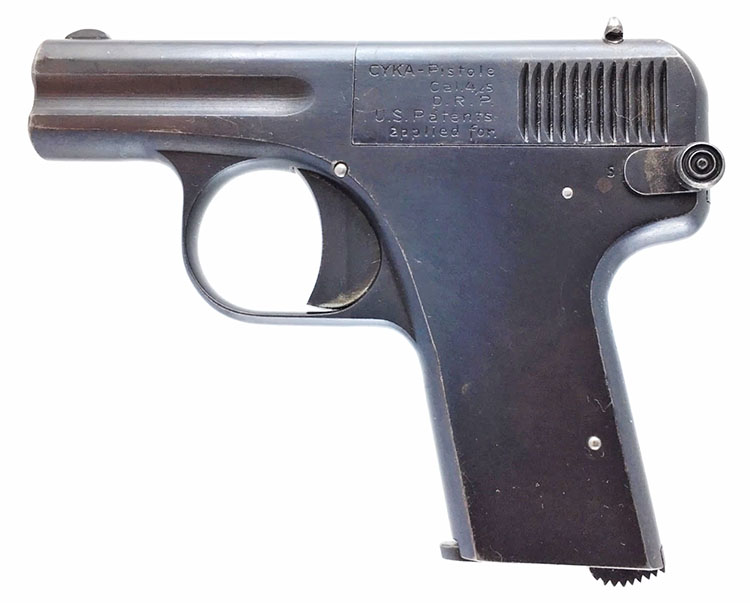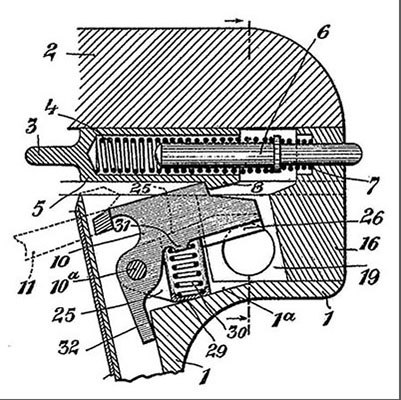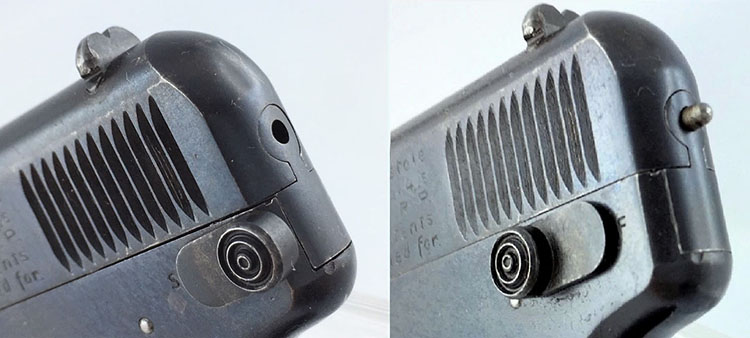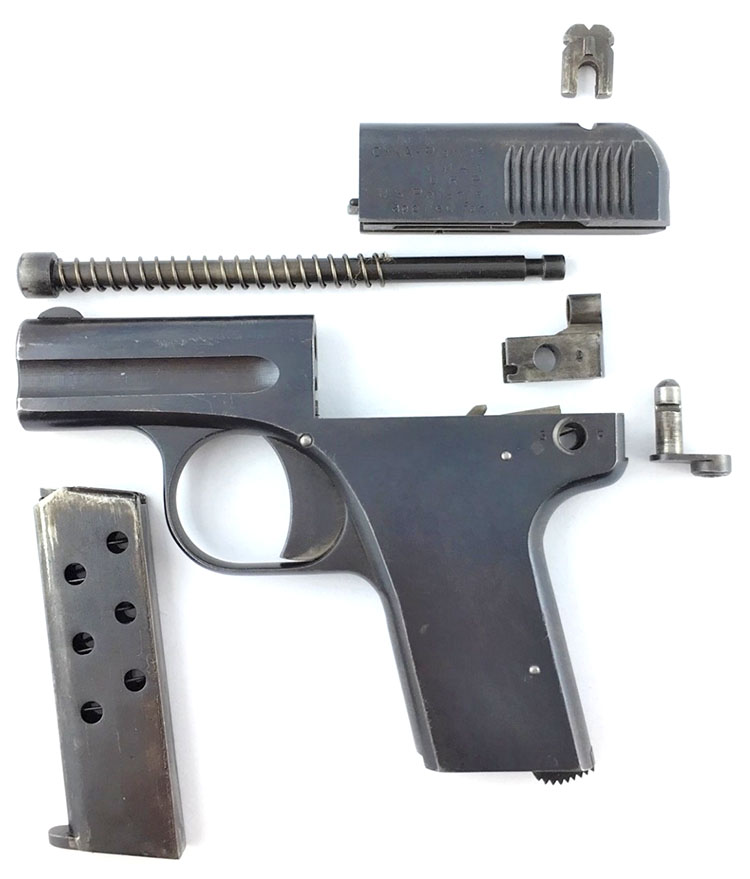 |
|||||||||||||||||||||||||||||||||||||||||||||||||||||||||||||||||||||||||||||||||||||||||||||||||||||||||||||||||||||||||||||||||||||||||||||||||
|
Franz Karpinski: The CYKA Pistol In 2015, Ed Buffaloe and I published an article entitled the The History of the August Menz Company and its Pistols. There, we touched briefly on Franz Karpinski, who joined the Menz Company in 1923. From 1921, Karpinski had filed four patents which were the starting point for his CYKA self-loading pistol in 4.25 mm Liliput: Deutsches Reich Patents (DRP) 361177, 371665, 379810 and 395486. The last three patents also formed the basis for the Menz Liliput pistol. The last patent, DRP 395486, was filed by Franz Karpinski of Stuttgart-Degerloch in conjunction with the Nordflugwerke mbH in Teltow-Berlin in July 1923, positive proof of Karpinski’s short intermezzo with the Nordflug company that resulted in the Nordflug pistol. So far, so good. I recently had the opportunity to buy a CYKA pistol (serial no. 2), which was the impetus for me to look further into Franz Karpinski’s work.
Patents a) DRP 361177, Selbstladepistole mit festem, aus dem Griffstück ausgebohrtem Lauf und über demselben angeordneter Vorholfeder für das Verschlußstück (self-loading pistol with a fixed barrel, drilled out of the frame, and the recoil spring in a housing above the barrel) of 24 May 1921.
The patent claim covers the connection between the recoil spring guide rod and the breech block (picture 2). For this, the rod (4) has a head (9) at its end with a groove (4a) in front of it. A small insert piece (6) with a hole (8) for the rod head fixes the rod to the breech block (5) and is held in place by the pressure of the recoil spring (3). The insert piece (6) simultaneously functions as the rear sight. To disassemble the gun, one pushes the recoil spring guide rod to the rear. This disconnects the rod from the counter-bored insert piece, so that one can pull the insert piece/rear sight out of the breech block. Then one can remove the guide rod and spring toward the front. b) DRP 371665, Selbstladepistole mit festem Lauf (Self-loading pistol with fixed barrel), of 19 November 1921. Only a few months later, Karpinski filed another patent covering the connection between the breech block and the frame. The patent 371665 shows that the breech block is guided by a ring-shaped “dolls-head” shaped abutment (18) for the recoil spring (4). The abutment can slide out of the frame to the rear and is fixed in place by the shaft of the manual safety (14).
c) DRP 379810, Selbstladepistole (self-loading pistol), of 14 October 1922. DRP 379810 is an amendment to patent 371665 and claims a simplification of the connection between the shaft of the manual safety lever and the rear closure piece which forms the rear abutment for the firing pin spring and cocking indicator, which makes the complicated flat spring (15) in picture 3 obsolete. This same patent was filed in the United States on 5 January 1923, and U.S. patent number 1,523,831 was granted on 20 January 1925.
d) DRP 395486, Selbstladepistole mit festem Lauf (self-loading pistol with fixed barrel), of 8 July 1923 DRP 395486 is another simplification of DRP 371665 in which the rear abutment for the firing pin spring and cocking indicator itself fixes the shaft of the manual safety lever in the frame under pressure of the firing-pin spring. Description: The CYKA is a self-loading pistol with barrel and frame milled and drilled from a single piece of steel, with the recoil spring located in a separate housing above the barrel. Hence the contour of the gun is relatively slim. The rear abutment for the firing pin spring and cocking indicator slides out of the frame to the rear and is fixed in place by the shaft of the manual safety lever. The ring -shaped upper extension of the abutment has a hole through which the rod of the firing pin protrudes as a cocking indicator (picture 5). This CYKA prototype has no grip plates, which gives it an even slimmer contour. The frame has no cut-outs and is not drilled for grip-plate screws.
CYKA-Pistole As stated above, the U.S. patent was granted in 1925. My CYKA with the extremely low serial No. 2 has the rear abutment as shown in DRP 379810. Based on the patent filing dates, I believe that the start of production was likely sometime between January and July of 1923.
Disassembly:
Assembly functions in reverse order. The CYKA is one of the great rarities for vest pocket pistol collectors – I know of no other such pistol in the hands of collectors. Thus, it would be idle speculation to discuss production numbers. However, if anyone owns a CYKA, I would appreciate you sharing information about your gun with me. Please write to webmaster@unblinkingeye.com.
|
|||||||||||||||||||||||||||||||||||||||||||||||||||||||||||||||||||||||||||||||||||||||||||||||||||||||||||||||||||||||||||||||||||||||||||||||||
|
Copyright 2019 by Stefan Klein. All rights reserved.. |
|||||||||||||||||||||||||||||||||||||||||||||||||||||||||||||||||||||||||||||||||||||||||||||||||||||||||||||||||||||||||||||||||||||||||||||||||
|
|
|||||||||||||||||||||||||||||||||||||||||||||||||||||||||||||||||||||||||||||||||||||||||||||||||||||||||||||||||||||||||||||||||||||||||||||||||






